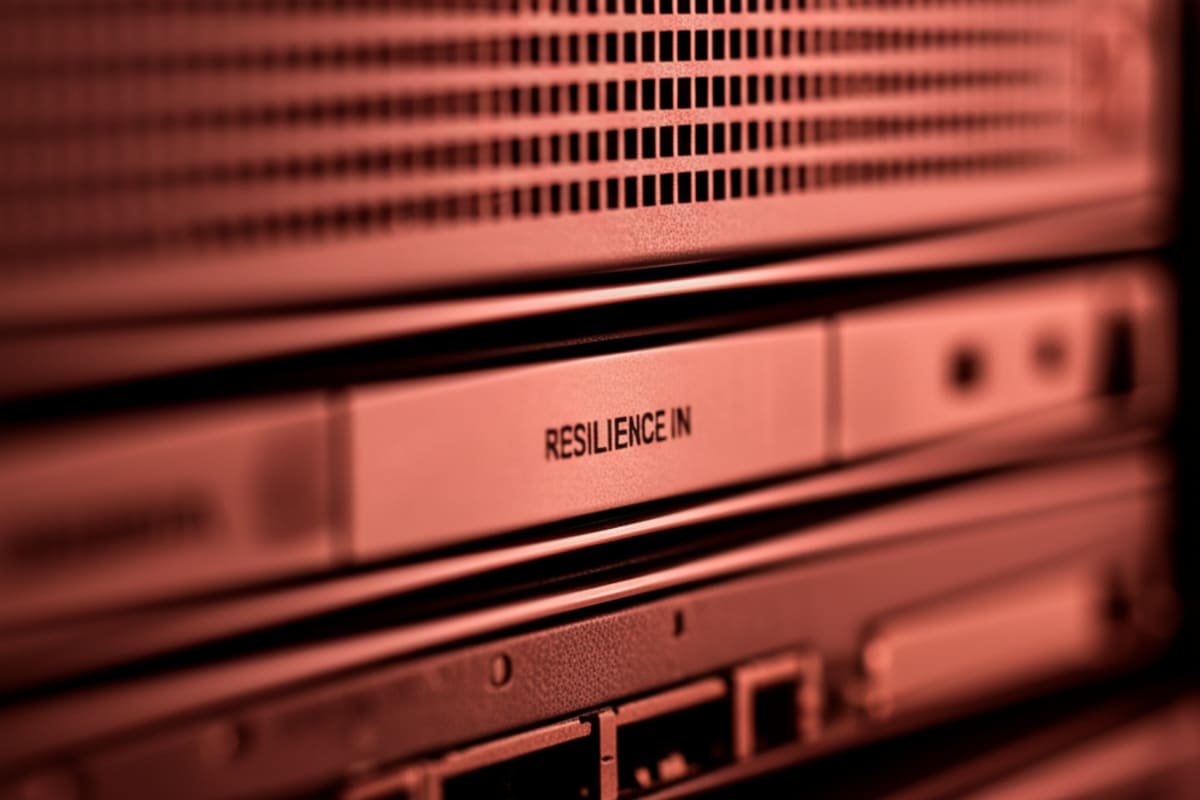Internet Grind to a Halt: AWS Outage Ripples Globally, Recovery Underway

Remember that moment this morning when your favorite app just wouldn't load. Or perhaps you couldn't check your smart doorbell, or your kid's online game suddenly froze.
Background
You weren't alone.
On Monday, October 20, 2025, at roughly 10:37 UTC, a ripple of digital disruption, originating deep within Amazon's vast cloud infrastructure in the United States, sent shockwaves across the global internet, reminding us just how interconnected and vulnerable our digital lives truly are
For hours, a seemingly innocuous 'IT issue' at Amazon Web Services (AWS) — the colossal engine powering a significant chunk of the modern internet — brought a surprising number of platforms to their knees
From the social chatter of Snapchat to the immersive worlds of Roblox, the secure messaging of Signal, and the language lessons of Duolingo, a constellation of digital services found themselves in an unexpected blackout
Even Amazon's own formidable retail empire and its Ring doorbell operations weren't immune, caught in the digital snarl their parent company inadvertently created. What Exactly Happened.
The Digital Backbone Stumbles AWS isn't just 'Amazon's servers.
' It's the silent, invisible backbone upon which countless businesses, from startups to Fortune 500 companies, build and run their operations
Think of it as the utility company for the digital world – providing everything from server space and databases to advanced AI tools and content delivery networks
When a core AWS region experiences a problem, it's not just one website going down; it’s like a major power grid failing, plunging entire digital districts into darkness
Initial reports, including those from cybersecurity experts, quickly pointed away from a malicious cyber-attack. This, in itself, was a small sigh of relief.
The notion of a rogue actor bringing down so much of the internet is a chilling thought.
Instead, the consensus coalesced around an internal IT issue – a configuration error, a hardware failure, or perhaps a software bug within AWS’s own meticulously engineered, yet inherently complex, systems
While reassuring that no data was likely compromised by external threats, it’s also a stark reminder that even the most sophisticated digital infrastructure isn't infallible
Even the best architects can trip on their own stairs, revealing inherent system vulnerabilities
The Global Ripple Effect: More Than Just Annoyance For millions of users around the world, the outage translated into tangible frustration and disruption
Imagine trying to send an urgent message through Signal only to see it hang in limbo
Or a child mid-game on Roblox, suddenly disconnected from their friends and virtual world.
For those relying on smart home devices, the Ring doorbell suddenly became a very ordinary piece of metal and plastic, unable to stream video or alert homeowners to visitors
Businesses that depend on these platforms for communication, sales, or even internal operations faced unexpected paralysis, highlighting the global internet's heavy reliance on a few major cloud providers like AWS
This wasn't just about entertainment
Financial services, logistics companies, healthcare providers, and a myriad of other critical sectors often leverage AWS for various aspects of their operations
While many enterprise-level clients employ robust redundancy strategies, routing traffic through different AWS regions or even across multiple cloud providers, smaller businesses and those with less sophisticated setups can be caught flat-footed
Every minute of downtime translates directly into lost revenue, decreased productivity, and damaged customer trust, demonstrating how a single point of failure can have cascading effects across the globe
Southeast Asia: Caught in the Global Digital Current The impact of a US-originating AWS outage might seem geographically distant for many in Southeast Asia, but the reality is far from it
Our region, a vibrant hub of digital transformation and innovation, is deeply intertwined with global cloud infrastructure.
Many tech startups, e-commerce giants, ride-hailing services, and fintech companies across countries like Indonesia, Vietnam, the Philippines, Thailand, and Malaysia, while perhaps having some local AWS presence (like in Singapore or Sydney), often rely on core services, databases, or specific advanced functionalities hosted in US AWS regions
For instance, a particular database service or an AI/ML offering might only be available or optimized in a US East region, forming a critical dependency
Consider the burgeoning digital economies in places like Ho Chi Minh City or Jakarta
A small online fashion retailer in Hanoi, whose e-commerce platform relies on a third-party service provider built on AWS US, would find their storefront effectively shuttered
A food delivery app in Manila, whose backend payment processing or mapping services use specific AWS functionalities, could experience severe delays or outright failure
The promise of seamless digital payments, essential for many in cashless societies, could suddenly falter.
This outage underscores how global infrastructure issues can swiftly translate into local economic and social disruption, impacting livelihoods and the daily conveniences millions have come to expect
Digital Resilience in a Connected Region This incident significantly impacted Southeast Asian digital economies, affecting businesses and users relying on AWS-hosted services, despite geographical distance from the outage origin
It’s a stark reminder that while the cloud offers unparalleled scalability and efficiency, it also concentrates risk
The more digitally dependent a region becomes – and Southeast Asia is rapidly embracing this future – the more susceptible it is to the single points of failure inherent in such centralized architectures
Governments and businesses in the region are increasingly prioritizing digital resilience, but incidents like this highlight the ongoing challenges
Developing robust local infrastructure and encouraging multi-cloud strategies are becoming critical conversations for policymakers and business leaders aiming to safeguard the region's rapid digital growth
Signs of Recovery: The Slow Climb Back Online Thankfully, by late morning UTC, reports began to trickle in suggesting that AWS was 'showing signs of recovery
' This isn't usually an instantaneous flick of a switch.
Rectifying such complex IT issues often involves meticulous debugging, restarting affected services one by one, and carefully monitoring the entire ecosystem to prevent cascading failures
Users might have noticed services slowly coming back online, sometimes intermittently, as the digital arteries were gradually unclogged.
However, even after the initial problem is resolved, residual effects can linger
Data backlogs, synchronization issues, and increased latency are common as systems try to catch up after an unexpected downtime.
It’s a painstaking process to restore full functionality and ensure data integrity across such a vast, distributed network
The event highlights the critical need for improved redundancy, multi-cloud strategies, and transparent communication from cloud providers during such crises
Lessons Learned: The Ever-Present Vulnerability This latest AWS hiccup serves as yet another powerful lesson in the fragility of our hyper-connected world
It emphasizes the critical need for redundancy and disaster recovery planning, not just for the cloud providers themselves, but for every business that builds upon their platforms
Diversifying infrastructure across multiple cloud providers (a 'multi-cloud' strategy) or even maintaining hybrid on-premise and cloud solutions, though costly, might prove invaluable in mitigating future risks
The fragility of our interconnected digital infrastructure is a constant concern," remarked one regional tech analyst, emphasizing that "while cloud adoption brings immense benefits, it also concentrates risk. Businesses and governments globally, and especially in fast-developing regions like Southeast Asia, must actively plan for these eventualities, moving beyond single-provider dependency.
The incident also prompts a necessary conversation about transparency and communication during outages. Clear, timely updates from major cloud providers are crucial for businesses and users to understand the scope of the problem and plan accordingly.
In an age where digital services are no longer a luxury but a fundamental part of daily life and commerce, understanding 'what this means for you' – the user, the small business owner, the digital nomad in Southeast Asia – becomes paramount
We're living in an era where the unseen machinery of the internet can, with surprising swiftness, bring our digital lives to a standstill
And as always, when that happens, we're reminded just how much we rely on it.
Ultimately, this event wasn't just a technical glitch; it was a global pause, a collective moment of digital helplessness that underscores the profound responsibility carried by the giants of cloud computing and the inherent vulnerabilities of our increasingly digital existence
While recovery is underway, the echoes of this digital disruption will surely resonate, prompting deeper thought about resilience in our increasingly cloud-dependent world, particularly as Southeast Asia continues its ambitious journey towards a fully digitized future
